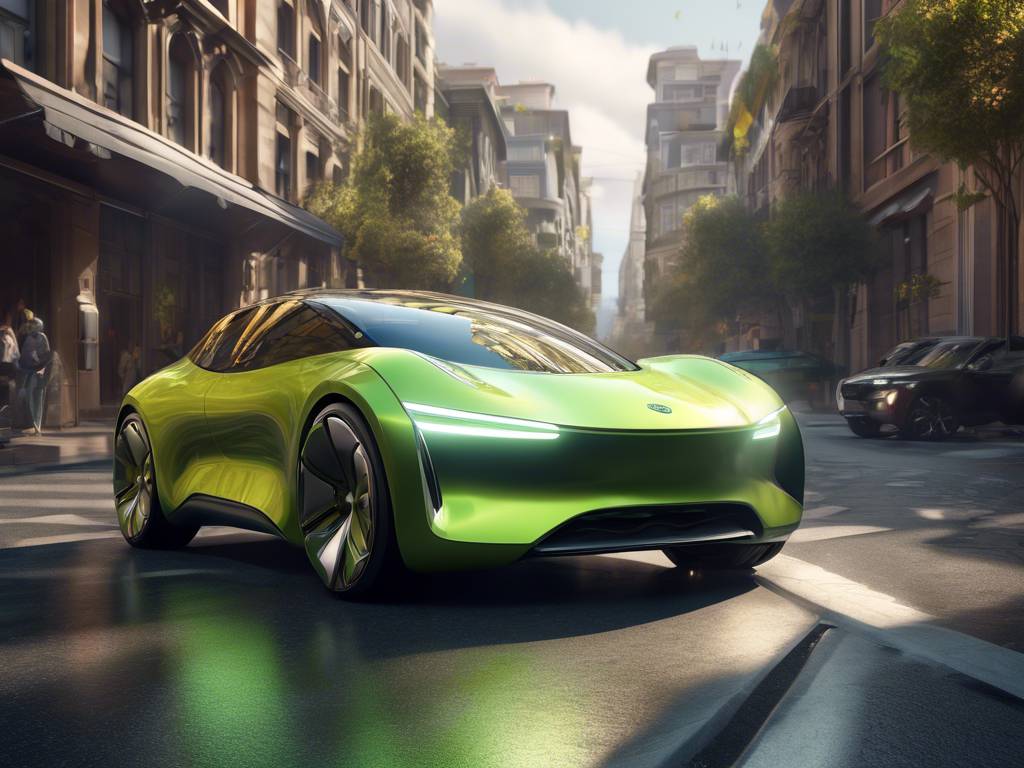Nvidia to Expand Partnerships with Chinese EV Makers to Create AI-Enabled Supercomputing in Vehicles
Nvidia (NVDA) has announced that it is expanding its partnerships with several Chinese electric vehicle (EV) makers, including BYD, to develop AI-enabled supercomputing in vehicles. During the keynote address at GTC 2021, Nvidia’s automotive Vice President Danny Shapiro spoke about the company’s focus on creating an AI brain that will enable automated and autonomous driving in vehicles.
Creating an AI Brain for Vehicles with Generative AI
Nvidia has developed a new AI platform called Blackwell, which utilizes generative AI and is designed to take data streams and create text, images, video, or video to text, which can be used to transform what goes inside cars, trucks, or robo-taxis, including the ability to have natural conversations with vehicles.
Nvidia’s generative AI technology can also be used to assist simulation for testing and validating autonomous vehicles. This advanced technology can detect objects such as pedestrians, bicycles, and vehicles, and it can also alert the driver to potential risks on the road, such as jaywalking or a baby stroller being pushed across the street.
Nvidia’s Focus on Creating AI-Enabled Experiences for the Auto Industry
Nvidia has been focused on AI-enabled experiences for more than a decade. In recent years, the company has been bringing artificial intelligence to in-cabin technologies, such as touchscreens, digital instrument clusters, and rear seat entertainment.
Having a concierge that can interact with passengers, convenient and safety features, and merging all of this data together can create an AI-powered in-car experience. Large language models can enable new experiences, allowing people to speak to their car in natural language.
Nvidia’s Expanding Partnerships in China
One of the partnerships Nvidia announced during GTC 2021 is with BYD, the world’s largest EV maker, which will be using Drive Thor, Nvidia’s new AI supercomputer designed to work in all temperatures for their future fleets of cars. BYD is also using Nvidia AI for training self-driving cars, in their data centers and factories. Nvidia’s digital twin technology, Omniverse, creates dynamic car configurators and retail experiences.
Nvidia Isaac Sim, a robotic stack, is used to create the robots that build the cars in the factory, and the design of the models themselves, letting designers envision the car anywhere from on the highway to by the beach.
Nvidia’s Mission in the Year Ahead
The explosive growth of AI shows no signs of slowing down, and we can expect Nvidia to continue pioneering AI-enabled experiences for the auto industry. With AI technology on-board, the vehicles will be living entities that are upgraded with new software over time. These updates will add new features, autonomous driving modes, and capabilities, providing drivers with new and exciting experiences.
Hot Take
Nvidia is expanding its partnership with Chinese electric vehicle makers, including BYD, to create AI-enabled supercomputers in vehicles that can detect potential risks on the road and alert drivers in real-time. Nvidia has been developing AI-enabled experiences for over a decade, and its recent focus has been in creating an AI brain for autonomous driving. The company’s newly launched Blackwell platform uses generative AI to create text, images, and video that transform what goes inside vehicles, making it more conversational and natural for people to talk to. The partnerships with EV makers in China aim to bring these AI-enabled experiences to cars, making them living entities that can upgrade with new software over time, providing drivers with new and exciting experiences.





 By
By
 By
By
 By
By

 By
By
 By
By